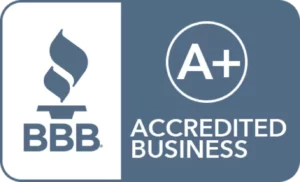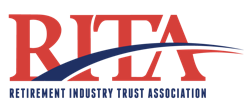Realtors have many options when planning for retirement. While some realtors have company-sponsored retirement plans, many realtors are self-employed. The majority of real estate agents are 1099 independent contractors. This article will explore different retirement planning options for realtors to help you decide what type of retirement plan is best for your situation.
Self-Employed Benefits for Realtors
A vast majority of realtors are self-employed. Accordingly, a self-employed real estate will receive a 1099 with the commissions earned from the real estate agency. There are many ways a realtor can be self-employed. They can be a sole proprietor. Alternatively, a realtor can establish an entity, such as an LLC, C, or S corporation. The great news is that it is now better than ever to be self-employed. Not only do you have the ability to control your work/life balance, and obtain health insurance via Obamacare, but you also have the opportunity to supercharge your retirement savings.
SEP IRA for Realtors
A Simplified Employee Pension Individual Retirement Arrangement (SEP IRA) has traditionally been the most popular retirement plan for the self-employed and small business owner A SEP IRA is a pure profit-sharing plan that allows the employer to male up to a 25% (20% in the case of a sole proprietorship of single member LLC) profit sharing contribution to all eligible employees up to a maximum of $69,000 for 2024 or $66,000 for 2023. . A SEP IRA does not include a catch-up contribution option for those over the age of 50. Also, a SEP IRA is a pure profit-sharing plan that excludes employee deferrals. In addition, with IRA Financial, one can establish a self-directed SEP IRA and invest in almost anything, including real estate.
The good news is that one can still set up a SEP IRA for 2023 up until the business files its income tax return. Starting in 2023, SEP IRA contributions can be made in pre-tax Roth. In both cases, pre-tax or Roth employer contributions are tax-deductible to the employer. However, in the case of the Roth, the realtor would have to take the contribution as income.
The SEP IRA is a great retirement and investment plan for a self-employed realtor.
Solo 401(k) for Realtors
The Solo 401(k) plan has surpassed the SEP IRA as the most popular retirement plan for the self-employed. A Solo 401(k) plan is an IRS-approved retirement plan, which is suited for business owners who do not have any employees, other than themselves and their spouses. A Solo 401(k) plan is basically a regular 401(k) plan covering only one employee. The most popular feature of the Solo 401(k) plan is the ability to make high annual contributions.
In 2024, a Solo 401(k) plan participant under the age of 50 can make a maximum annual employee deferral contribution in the amount of $23,000 ($22,500 for 2023). That amount can be made in pre-tax, after-tax, or Roth. On the profit-sharing side, the business can make a 25% (20% in the case of a sole proprietorship or single member LLC) annual profit-sharing contribution based on the amount of the net Schedule C amount or W-2, as applicable, up to a combined maximum, including the employee deferral, of $69,000 for 2024 or $66,000 for 2023. https://www.bankrate.com/retirement/roth-ira-plan-calculator/.
For plan participants over the age of fifty, an individual can make a maximum annual employee deferral contribution in the amount of $30,500 for 2024 ($30,000 for 2023). That amount can be made in pretax, after tax, or Roth. On the profit-sharing side, the business can make a 25% (20% in the case of a sole proprietorship or single member LLC) annual profit-sharing contribution based on the amount of the net Schedule C amount or W-2, as applicable, up to a combined maximum, including the employee deferral, of $76,500 for 2024 or $73,500 for 2023.
Related: Solo 401(k) or SEP IRA for Real Estate Investments
SEP IRA vs Solo 401(k) for Realtors
The primary reason the Solo 401(k) plan has surpassed the SEP IRA as the most popular retirement plan for the self-employed realtor is the ability to supercharge your annual plan contributions.
Example 1. Amy is a 45-year-old sole proprietor realtor who earned $100,000 in commissions in 2024. If Amy had set up a SEP IRA, the max she would be able to contribute to the plan would be $20,000 (20% of $100,000) for 2024. Whereas, if Amy read this blog and set up a solo 401(k) plan versus a SEP IRA, she could contribute up to $43,500 ($23,000 as an employee deferral plus 20% of compensation) for 2024. Hence, the solo 401(k) plan would allow Amy to more than double the annual contributions she could make to his retirement plan.
Example 2. Chris is a 55-year-old realtor with an S Corporation and earned $100,000 in commissions in 2024 as a W-2. If Chris had set up a SEP IRA, the max he would be able to contribute to the plan would be $20,000 (20% of $100,000) for 2024. Whereas, if Chris read this blog and set up a solo 401(k) plan versus a SEP IRA, he could contribute up to $55,500 ($30,500 as an employee deferral plus 25% of his W-2) for 2024. Hence, the solo 401(k) plan would allow Chris to more than double the annual contributions he could make to his retirement plan.
In addition, many additional features make the Solo 401(k) plan a far more attractive retirement plan for the self-employed versus the SEP IRA:
Self-Directed Investment Choices: A self-directed solo 401(k) plan allows one to make traditional investments, such as stocks, but also alternative asset investments, such as real estate or even cryptocurrencies. However, not all solo 401(k) plans allow for alternative asset investments, so it is important to work with a company, such as IRA Financial, that has IRS-approved retirement plans for real estate and other alternative asset investments.
Tax-Free & Penalty-Free Loan Option: With a Solo 401(k) Plan, one can borrow up to $50,000 or 50% of your account value whatever is less. The loan can be used for any purpose. A SEP IRA does not offer a loan feature.
Use Non-recourse Leverage and Pay No Tax: With a Solo 401(k) Plan, one can make a real estate investment using a nonrecourse loan (a loan not personally guaranteed by the plan participant) without triggering the Unrelated Debt Financed Income Rules and the Unrelated Business Taxable Income (UBTI or UBIT) tax (IRC 514). However, the nonrecourse leverage exception found in IRC 514(c)(9) is only applicable to 401(k) qualified retirement plans and does not apply to IRAs. In other words, using a Self-Directed SEP IRA to make a real estate investment involving nonrecourse financing would trigger the UBTI tax, which is approximately 37%.
Mega Backdoor Roth: A Solo 401(k) plan, employee deferrals of $23,000 or $30,500 if over the age of 50 for 2024 can be made in pre-tax, after-tax, or Roth format. In addition, a solo 401(k) plan has a “mega backdoor Roth” option that offers one to make Roth contributions dollar-for-dollar of up to $69,000 or $76,500 if over 50 in 2024.
Related: Solo 401(k) for Real Estate
Defined Benefit Plan/Cash Balance Plan
For realtors who expect to have consistent annual earnings above $150,000 for the next several years and are looking to put away over $100,000+ a year in a retirement plan, the defined benefit/cash balance plan is your answer.
A cash balance plan, a type of defined benefit pension plan, promises an employee an employer contribution equal to a percent of each year’s earnings and a rate of return on that contribution. Defined benefit plans guarantee a specific benefit at retirement to each eligible employee. In general, defined benefit plan benefits are funded over the working life of the participating employee with annual tax-deductible contributions from the employer. The employee does not make any contributions to the plan. Instead, the employer makes all contributions based on predetermined retirement benefits as outlined in the pension plan document. Based on certain complex calculations by an actuary, a defined benefit/cash balance plan can provide enormous tax benefits and retirement savings to self-employed realtors.
Conclusion
So, what is the best retirement account for realtors? For most realtors, the Solo 401(k) plan offers the greatest retirement and tax saving benefits. In addition, a Solo 401(K) plan can also contain a self-directed option allowing one to use their Solo 401(k) plan funds to invest in real estate as well as other alternative assets, such as private business stock, in addition to traditional investments, such as equities. For any realtor who expects consistent earnings above $150,000 for several years and wishes to maximize their retirement and tax benefits, the defined benefit/cash balance plan is a great option.











